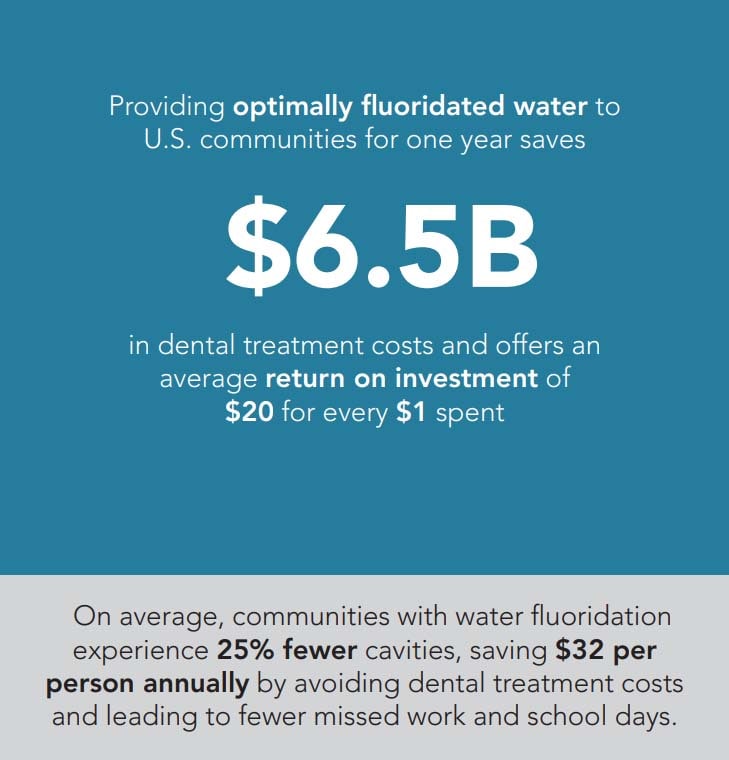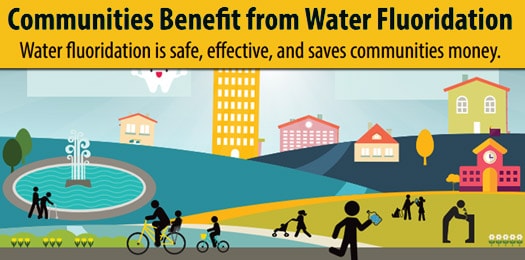Overview
- Community water fluoridation is the process of adjusting the amount of fluoride in drinking water to a level recommended for preventing tooth decay.1
- More than 75 years of research and experience shows that community water fluoridation is a safe and healthy practice.2
- Community water fluoridation remains one of the most cost-effective methods of delivering fluoride to all community members regardless of age, educational attainment, or income level, and saves money for families and the US health care system.3
- Drinking fluoridated water keeps teeth strong and reduces cavities by about 25% in children and adults. This results in less pain, fewer fillings or teeth pulled, and fewer missed days of work and school.4
- The return on investment for community water fluoridation varies with size of the community, increasing as the community size increases, and is cost-saving even for small communities. Communities of 1,000 or more see an average estimated return on investment of $20 for every $1 spent on water fluoridation.5
- Communities served by fluoridated water save an average of $32 per person a year by avoiding treatment for cavities.5
- In 2016, more than 200 million people, or about 73% of the US population, had access to fluoridated water.6
- Community water fluoridation is recommended by nearly all public health, medical, and dental organizations. It is recommended by the American Dental Association, American Academy of Pediatrics, US Public Health Service, and World Health Organization.
Featured Community Water Fluoridation Infographics
Economic Impact of Community Water Fluoridation

References
- Centers for Disease Control and Prevention. Community Water Fluoridation website: https://www.cdc.gov/fluoridation/basics/index.htm. Accessed 3/25/2020.
- US Department of Health and Human Services. Oral Health in America: A Report of the Surgeon General. Rockville, MD: US Department of Health and Human Services, National Institute of Dental and Craniofacial Research, National Institutes of Health; 2000. https://www.nidcr.nih.gov/research/data-statistics/surgeon-generalexternal icon. Accessed February 20, 2020.
- Centers for Disease Control and Prevention. Achievements in public health, 1900-1999: fluoridation of drinking water to prevent dental caries. MMWR. 1999;48(41):933-940.
- Griffin SO, Regnier E, Griffin PM, Huntley VN. Effectiveness of fluoride in preventing caries in adults. J Dent Res. 2007;86(5):410–414.
- O’Connell JM, Rockwell J, Ouellet J, Tomar SL, Maas W. Costs and savings associated with community water fluoridation in the United States. Health Aff. 2016;35(12):2224–2232.
- Centers for Disease Control and Prevention. Fluoridation Statistics website: 2016. https://www.cdc.gov/fluoridation/statistics/2016stats.htm. Accessed January 28, 2020.
Page last reviewed: August 25, 2020 [on Google News, Sept 19, 2020]
*Online at https://www.cdc.gov/oralhealth/fast-facts/community-water-fluoridation/index.html

